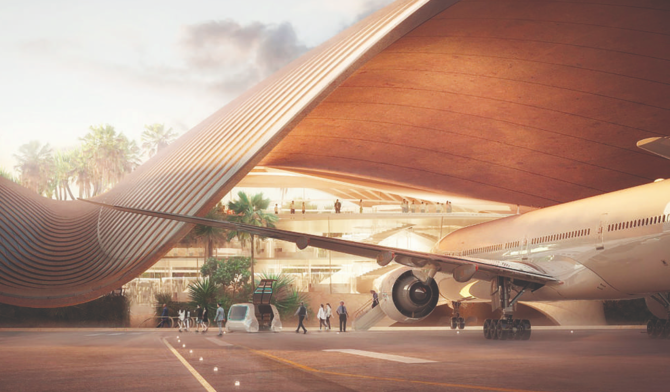JEDDAH: The solar-powered Red Sea International Airport is set to become operational in a few months, according to a press release by Red Sea Global, the multi-project developer behind the regenerative tourism destination.
RSG, wholly owned by Saudi Arabia’s Public Investment Fund, has released an update on the progress of the first phase of the Red Sea destination, marking six years since the company was first announced by Crown Prince Mohammed bin Salman.
The latest construction update reveals the progress achieved across the destination, including 13 hotels and the supporting infrastructure.
John Pagano, RSG group CEO, said that his company stands at the brink of an extraordinary moment as it prepares to introduce the Red Sea destination to the world.
“In six years, we have made exceptional progress, creating exquisite resorts and best-in-class, sustainable infrastructure in a remote location, demonstrating innovation in line with our regenerative approach and commitment to responsible development,” he said.
Pagano went on to say that while the anticipation builds for the opening of their first hotels and the initial phase of the company’s solar-powered airport, they are busy working on the rest of phase one.
He added: “We are ready to deliver countless more extraordinary moments on our journey to positioning Saudi Arabia proudly on the world stage as a must-visit destination.”
Emphasizing his company’s commitment to preserving the surrounding environment, Pagano said in a tweet: “We hold the utmost respect for the environment in which we operate and recognize it as our most valuable asset. It’s our shared obligation to not only safeguard it but also proactively enhance it wherever possible.”
Highlighting the progress on its mountain resort Desert Rock, which is being built into the rockface, the press release pointed out that more than 50 percent of the work has been completed. RSG has fully excavated and formed the 10 rooms integrated into the mountainside as well as all 195 meters of tunneling.

Highlighting the progress on its mountain resort Desert Rock, which is being built into the rockface, the press release pointed out that more than 50 percent of the work has been completed.
RSG said major structural and infrastructure works are well advanced, including the construction of the wadi villas, guest hubs and other structures.
The developer added that work is underway on all 11 resorts and infrastructure across Shura Island.
“Over 100 construction contracts are in place, with a similar number out in the market for tender. RSG continues to maximize the use of off-site manufacturing with precast structures progressing rapidly, bathroom pod deliveries underway, and the prefabricated timber structure on the Golf Clubhouse nearing completion,” the press release noted.
It went on to say that the developer is moving onto beach formation and beautification works which includes the creation of new mangrove habitats in the coming months.
As for Sheybarah Island, RSG said that it has installed all 38 stainless steel overwater villas adding that the first beach villas have arrived at the island, one of which has successfully been installed.
Last week, RSG announced it has completed installing over 760,000 photovoltaic panels needed to power phase one of the tourist destination.
The company further stated that there are now more than 25,000 personnel working at the destination.
It concluded that upon completion in 2030, the destination will comprise 50 resorts, offering up to 8,000 hotel rooms and more than 1,000 residential properties across 22 islands and six inland sites. The destination will also include luxury marinas, golf courses and entertainment as well as food and beverage and leisure facilities.



























